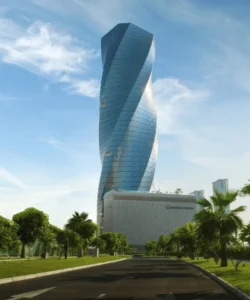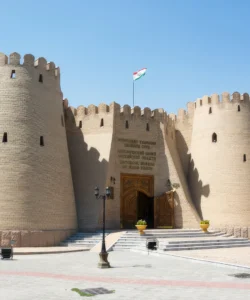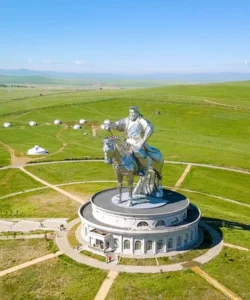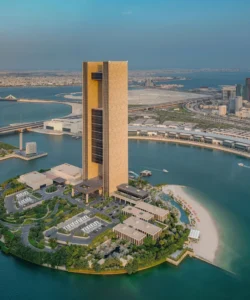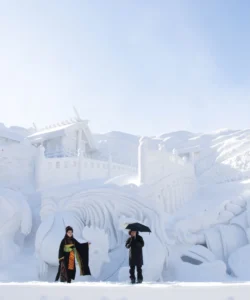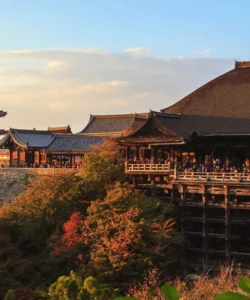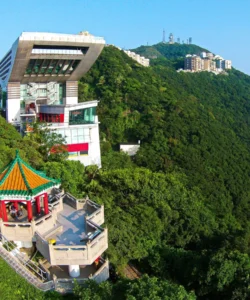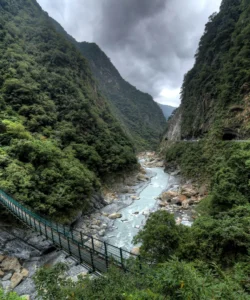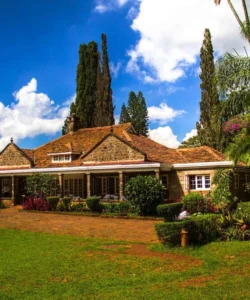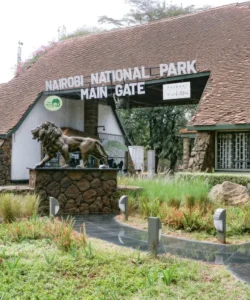The Taj Mahal is an unparalleled masterpiece of architecture and a globally recognized symbol of eternal love. This magnificent ivory-white marble mausoleum stands proudly on the right bank of the Yamuna River in Agra, Uttar Pradesh, India. Commissioned by the Mughal Emperor Shah Jahan in 1631 to house the tomb of his beloved wife, Mumtaz Mahal, it also enshrines his own tomb.

Name: Taj Mahal (Persian/Urdu: تاج محل, meaning “Crown of Palaces”)
Address: Dharmapuri, Forest Colony, Tajganj, Agra, Uttar Pradesh 282001, India.
It is located in the eastern part of Agra city, on the southern bank of the Yamuna River.
How to Get There:
Agra is well-connected to major Indian cities. Most international travelers combine a visit to the Taj Mahal with Delhi or other parts of India.
- By Air: The closest airport to the Taj Mahal is Agra’s Kheria Airport (AGR), which has limited domestic flights. Most international travelers fly into Indira Gandhi International Airport (DEL) in New Delhi.
- From New Delhi to Agra:
- Train (Recommended): The fastest and most convenient way. High-speed trains like the Gatimaan Express or Tejas Express connect Delhi’s Hazrat Nizamuddin Railway Station (NZM) to Agra Cantt (AGC) in about 1.5 – 2 hours. This is highly recommended for a day trip.
- Car/Taxi: A drive via the Yamuna Expressway takes approximately 3-4 hours, depending on traffic. You can hire a private car with a driver.
- Bus: Regular bus services operate from Delhi’s bus terminals to Agra. This is the most budget-friendly but also the slowest option.
- Within Agra to Taj Mahal:
- Auto-rickshaw/Cycle-rickshaw/E-rickshaw: The most common and convenient local transport. Due to environmental regulations, petrol/diesel vehicles are not allowed within 500 meters of the Taj Mahal. You’ll be dropped off at designated parking areas (East Gate, West Gate, South Gate) and can then walk, take an e-rickshaw, or cycle-rickshaw to the gate.
- Battery-operated Shuttle Buses: Free shuttle buses are often available from the parking areas to the Taj Mahal gates.
- Entrance Tickets: Tickets can be purchased online (recommended for faster entry) or at the ticket counters near the various gates (East, West, South). Separate fees apply for foreigners and Indians. There’s also an additional fee for entry to the main mausoleum.
- Best Time to Visit: The ideal time to visit is from October to March, when the weather is cooler and pleasant. The Taj Mahal is most enchanting at sunrise and sunset, offering incredible photo opportunities as the marble changes hues. It is closed on Fridays for prayers.
Landscape and Architecture:
The Taj Mahal is a masterpiece of Mughal architecture, representing the zenith of a style that blends elements from Islamic, Persian, Indian, and Turkish architectural traditions. It is renowned for its perfect symmetry, intricate ornamentation, and profound symbolism.
- The Mausoleum: The central and most iconic structure is the ivory-white marble mausoleum, housing the cenotaphs of Mumtaz Mahal and Emperor Shah Jahan (their actual tombs are in a crypt below). The mausoleum is an octagonal structure with four identical facades, each featuring a large arched doorway (iwan). It is crowned by a magnificent bulbous central dome, often called an “onion dome,” which is flanked by four smaller domed kiosks (chhatris).
- Perfect Symmetry: The entire complex is a testament to perfect bilateral symmetry along a central axis. Every element, from the gardens and reflecting pools to the flanking buildings, is meticulously mirrored, creating a profound sense of balance and harmony, except for Shah Jahan’s own cenotaph, which was later placed slightly off-center next to Mumtaz Mahal’s.
- Four Minarets: Four slender, 40-meter (130-foot) tall minarets gracefully frame the main mausoleum at each corner of the raised marble platform. These minarets are slightly tilted outwards, an ingenious architectural safety feature designed so that, in the event of an earthquake, they would fall away from the main tomb, preventing damage.
- White Marble and Precious Inlay (Pietra Dura): The mausoleum is constructed almost entirely of translucent white Makrana marble from Rajasthan, which possesses a unique quality of reflecting hues according to the light conditions – appearing pink at dawn, milky white in the day, and golden at sunset. This marble is exquisitely inlaid with pietra dura, a technique using 28 types of precious and semi-precious stones (like lapis lazuli, jade, turquoise, sapphire, carnelian) to create intricate floral patterns, geometric designs, and calligraphy from the Quran.
- The Great Gate (Darwaza): The majestic red sandstone main gateway at the southern end of the complex is a grand entrance. It’s adorned with white marble inlays and calligraphy, featuring towering archways and chhatris, preparing visitors for the architectural splendor within.
- Charbagh Garden: The main mausoleum is set within a sprawling, meticulously designed Charbagh (four-part) garden. This traditional Persian-style garden is divided into four equal quadrants by waterways, symbolizing the four rivers of Paradise mentioned in the Quran. The central reflecting pool in the garden perfectly mirrors the Taj Mahal, creating an illusion of the structure floating. Cypress trees (symbolizing death) and fruit trees (life) are strategically planted.
- Mosque and Jawab: Flanking the mausoleum on either side are two symmetrically identical red sandstone buildings: a mosque (facing west towards Mecca) and its Jawab (“answer” or guest house) to the east, providing perfect aesthetic balance. Their red color provides a striking contrast to the pure white marble of the mausoleum.
- River Yamuna: The location on the right bank of the Yamuna River was strategically chosen, not just for aesthetic beauty but also for practical reasons like transporting marble and stabilizing the foundations on timber piles kept moist by the river.
What Makes It Famous:
- Symbol of Eternal Love: The Taj Mahal is globally celebrated as the ultimate monument of love, built by Emperor Shah Jahan in memory of his beloved wife, Mumtaz Mahal. This profound love story adds a deeply emotional and romantic dimension to its fame.
- UNESCO World Heritage Site: Designated a UNESCO World Heritage Site in 1983, it is recognized as “the jewel of Muslim art in India and one of the universally admired masterpieces of the world’s heritage.” It’s also one of the “New Seven Wonders of the World.”
- Architectural Masterpiece: It is widely considered the finest example of Mughal architecture, showcasing a harmonious blend of Persian, Islamic, Indian, and Turkish styles. Its perfect symmetry, intricate detailing, and use of precious materials are unparalleled.
- Color-Changing Marble: The unique quality of its white marble to appear in different hues (pink at sunrise, white at noon, golden at sunset, and silvery under moonlight) is a famous phenomenon that adds to its mystique and beauty.
- Iconic Landmark: The Taj Mahal is India’s most recognizable landmark and one of the most famous monuments worldwide, attracting millions of visitors annually.
- Incredible Craftsmanship: The scale of the construction, involving over 20,000 artisans and laborers over 22 years, and the exquisite pietra dura inlay work, represent an incredible feat of human craftsmanship.
- Reflecting Pool View: The iconic view of the Taj Mahal perfectly reflected in the central pools of the Charbagh garden is one of the most famous and photographed perspectives of the monument.
Differences from Some Other Wonders:
- Purpose as a Mausoleum: Unlike other temples (Angkor Wat, Borobudur, Prambanan) which were built primarily for worship of deities, the Taj Mahal’s core purpose is as an immense mausoleum (tomb) for a beloved empress. This focus on funerary architecture of immense beauty sets it apart.
- Perfect Symmetry and Bilateral Balance: While many grand structures incorporate symmetry, the Taj Mahal’s near-perfect bilateral symmetry across its entire complex, from the main gate through the garden to the flanking buildings, is a defining and unparalleled feature. The deliberate slight outward tilt of the minarets for earthquake protection is also a unique engineering detail within this symmetry.
- White Marble and Pietra Dura Inlay: While other wonders use stone, the Taj Mahal’s extensive use of translucent white marble as the primary cladding material, combined with its incredibly intricate and extensive pietra dura (precious stone inlay), creates a level of delicate ornamentation and ethereal beauty distinct from the carved stone reliefs or red sandstone used in other monuments.
- Symbolism of Love as Primary Driver: While spiritual devotion drives many wonders, the singular, overwhelming narrative of enduring love between an emperor and his empress as the inspiration for such a monumental and beautiful structure is unique to the Taj Mahal.
- Garden as an Integral Part of the Design: The meticulously planned Charbagh garden with its reflecting pools is not just an adornment but an integral and symbolic component of the entire complex, designed to represent Paradise, creating a specific entry experience unlike many other monuments.
- Lack of Internal Worship Space: Unlike active temples or cathedrals, the Taj Mahal’s interior, while exquisitely decorated, functions as a tomb chamber and not a congregational worship space in the traditional sense. Visitors typically only view the cenotaphs.





















